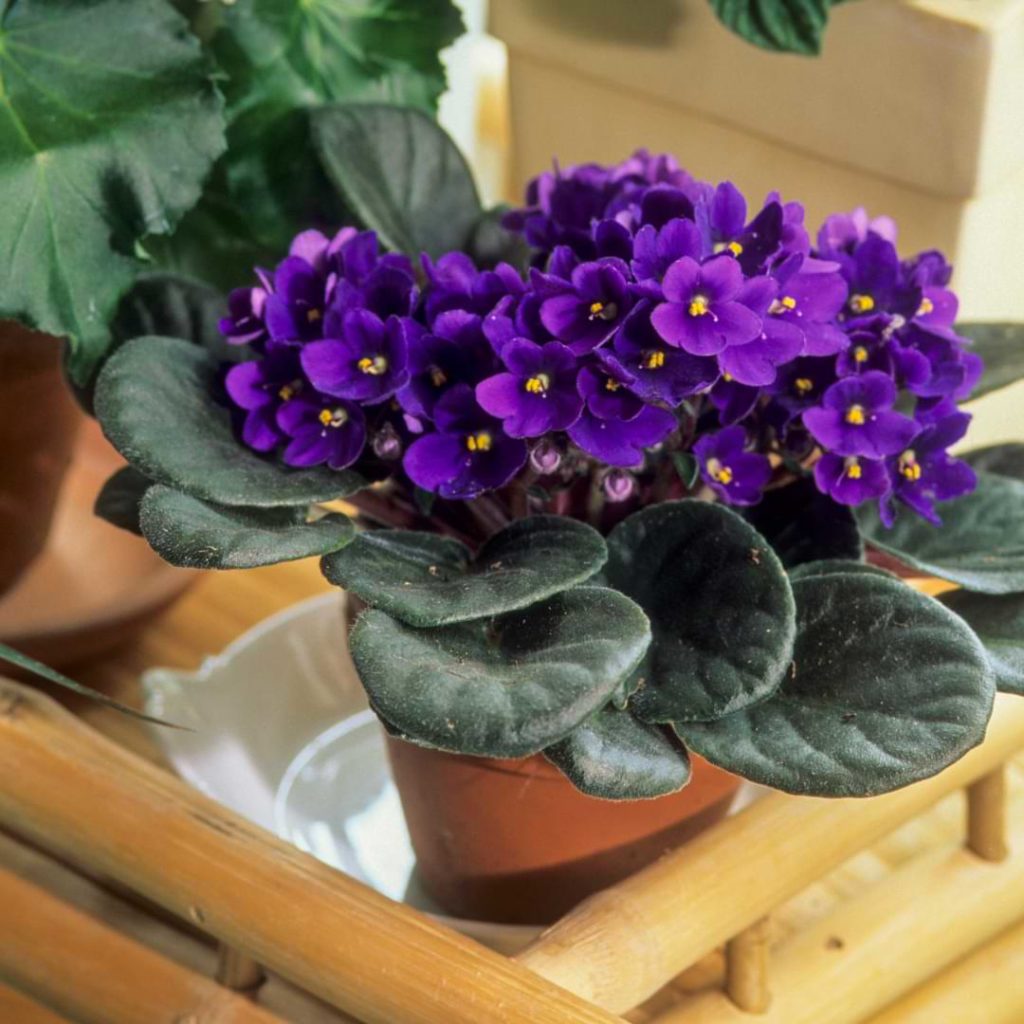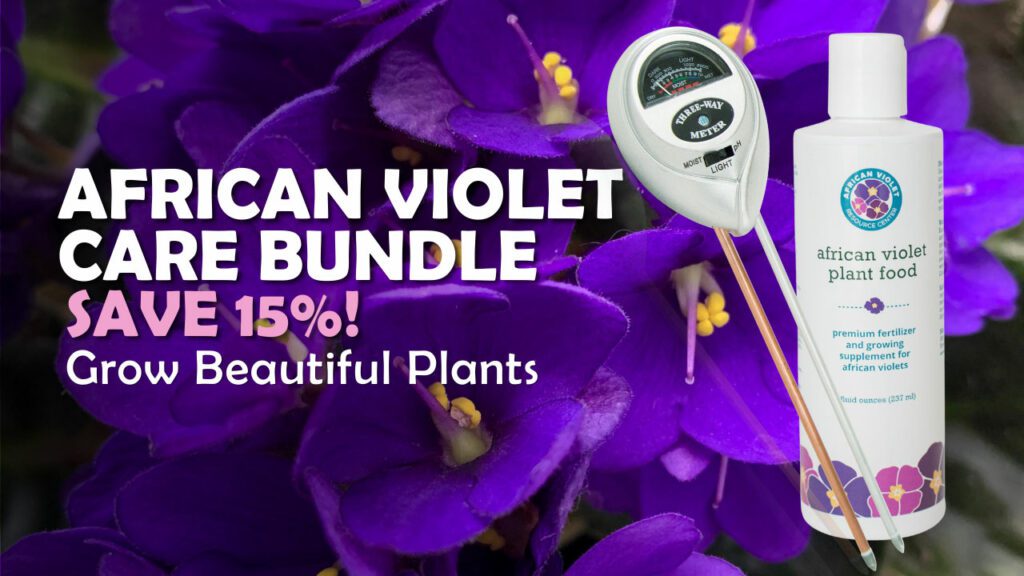With the right care, African violets can bloom in an array of delightful colors nearly all year round. That’s one reason they’re the one of the world’s most beloved houseplants.
But what happens when your African violet suddenly sheds its flowery display?
It can be frustrating and alarming to see your African violets not blooming. But, rather than a sudden case of stage fright, it’s usually linked to an environmental imbalance that needs correcting.
Troubleshooting Checklist
There are several environmental factors that can make your African violet withhold its beautiful blooms. This troubleshooting checklist unpacks the top 5 culprits and how to make your African violet bloom again. With a little investigative spirit and some extra TLC, your plant will be showing off again in no time!
The Top 5 Culprits
- Too little sunlight
- Environment too cold
- Soil too dry or moist
- Container too large
- Insufficient nutrients
1. Too Little Sunlight
African violets are known for being a little sun-shy, but sometimes well-intentioned caretakers can overdo it. If your African violet won’t bloom, too little sunlight is the most likely culprit.
How to Diagnose
First, inspect the foliage. Are the leaves starting to grow tall and skinny, rather than lush and compact? That’s a surefire sign your plant is putting more energy into reaching for sunlight than powering new blooms. Healthy foliage will be thick and velvety; sun-starved foliage will be thin and smooth.
How to Remedy
African violets are the Goldilocks of the plant world: they can’t handle too much or too little sunlight. Place your plant in a location where it can receive bright, indirect sunlight. An east-facing mantle or side table against an inside wall is good.
Learn more: Find a placement that’s “just right” with our guide to African violets and sunlight.
2. Environment Too Cold
African violets are tropical plants, and they simply can’t handle temperature swings or cold temperatures altogether. If you have an African violet not blooming, a chilly hallway or drafty windowsill could be the culprit.
How to Diagnose
If your African violet is too chilly, it will drop its blooms and slow its growth. After prolonged exposure, its foliage will begin to wilt and grow translucent and mushy. Your plant may also grow lopsided, with the section nearest to the cold spot stunted in comparison to the rest of the plant.
How to Remedy
Providing the right temperature is simple: keep it pleasant! Move your African violet somewhere it can continuously access temperatures between 68-70ºF. Prevent temperature swings by keeping away from doors and poorly insulated spaces.
Learn more: Along with the temperature, discover more tips on how to keep your African Violet alive for years to come.

3. Soil Too Dry/Moist
The golden rule of African violet care: balance, balance, balance! This applies to conditions below ground too. Both too much and too little moisture will stress out your plant’s delicate root system, and force it to sacrifice its sunny blooms.
How to Diagnose
Stick your finger into the soil; if it’s bone-dry or fully saturated, you’ve probably found your culprit. A properly saturated potting mix will feel slightly moist to the touch but not damp (like a rag that has been rung out).
- Symptoms of prolonged overwatering: Brown spots; crown or root rot; mold growing on soil; wilted and mushy stems and foliage
- Symptoms of prolonged underwatering: Yellowed or pale leaves; wilting, drooping, and crispy foliage; soil surface hard and cracked
How to Remedy
If you’re not already, switch to a bottom watering method. This allows your plant to regulate its own moisture intake. But your plant will still suffer if it’s living in improper soil. African violets need special potting mix and can’t survive in conventional blends. If you’ve used a standard houseplant mix on your African violet, repot and replace as soon as possible.
Learn more: Our guide to African violet potting mix will teach you everything you need to know.
4. Container Too Large
Unlike some plants, African violets do best when they’re slightly root-bound. Limiting space beneath ground encourages your plant to focus its attention on growing above ground instead. If you’ve recently repotted your plant and it has shed its flowers, this might be the culprit.
How to Diagnose
The first sign is your African violet not blooming, because it’s putting all of its energy into expanding beneath the ground. If you’ve recently repotted and now the soil is retaining more water than usual, this indicates there are not enough roots to soak up all the available moisture.
How to Remedy
Transplant your African violet into a smaller container. Remove the plant and measure its root ball (the mass of roots with soil removed). Place in a container that allows the entire root ball to fit snugly inside, with just enough space to add soil.
Learn more: Our guide to African violet repotting can help ensure a safe migration.
5. Insufficient Nutrients
Unlike wild plants, your African violet can’t replenish the nutrients it depletes from the soil. If you’ve been forgetful with fertilization, your plant won’t have the nourishment it needs to hang on to its blooms.
How to Diagnose
Are you behind schedule? If you use traditional fertilizer, you should fertilize your plant every four to six weeks during the growing season. Symptoms of under-fertilization include: stunted growth; pale, limp leaves with yellow tips; shriveled roots; and your African violet not blooming, of course!
How to Remedy
We recommend using a gentle, urea-free African violet plant food every time you water. With this approach, fertilization becomes second nature. Whichever fertilizer type you choose, get started right away. And follow the directions on the container to avoid over-fertilization.
Learn more: Here’s how to fertilize your African violet plant.
Have another hot tip for an African violet not blooming? Join the conversation in our Facebook group.
Join the African Violet Club!
Whether you’re just starting out or are a seasoned grower, African Violet Resource Center has everything you need to help your plant grow vibrant and strong. Explore our other articles, visit our online shop, and connect with other houseplant lovers in our Facebook group to learn everything you need to know about this rewarding hobby!
More Great African Violet Resources
How to Remedy Crowded African Violet Leaves
Where to Buy African Violet Plants & Products







